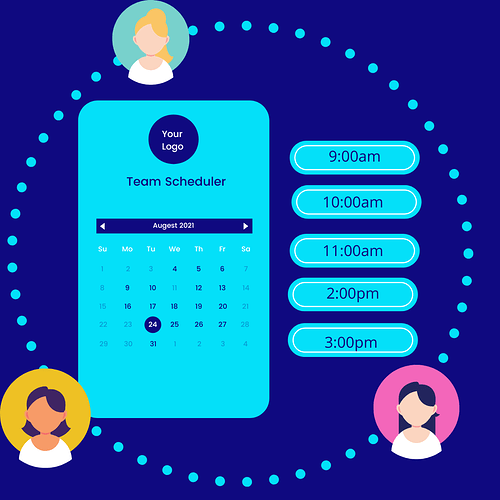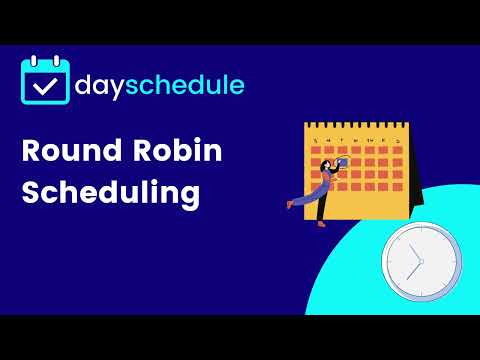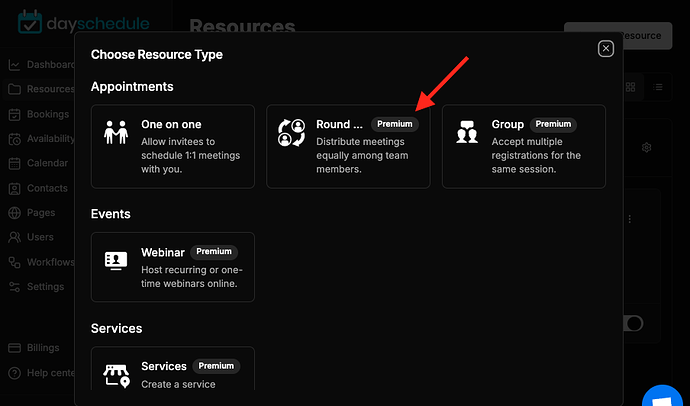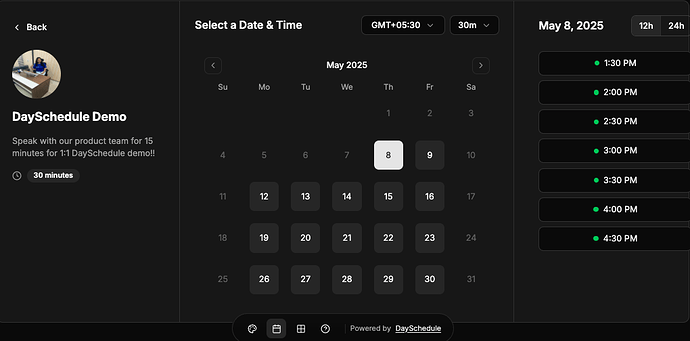Round robin scheduling is most commonly used for team meetings and sales calls. It’s an easy way to ensure that each team member or salesperson gets a chance to speak with customers, and that no one gets left out of the loop.
When you’re planning a round-robin event, it’s important to first determine how many team members will be participating. Each person will meet with every other invitee, so the day schedule software needs that information to properly figure out the right schedule.
Once you have all of your team members in the system, you can decide what time slots are available for meetings. The Round-robin event type will automatically rotate the host from selected team members to assign new meetings.
The Invitees can pick a time slot from the specified working hours and the meeting is automatically assigned to the next free member. For example, when a customer books a product demo on your website, the meeting should rotate across your Sales team to ensure the leads are distributed evenly across the Sales team members selected in the event.
This ensures no sales member is overloaded, plus everyone on your sales team is occupied with a lead as per their calendar availability.
Creating a round-robin Event
-
Go to the Resources > Events
-
Select the Round robin event type as in the screenshot below
-
Enter the event name, description and select your scheduling page to attach this event.
-
Select the team members and set priority accordingly
- Specify your Team availability, e.g. business hours, holidays etc.
- Add the scheduling notice(if any) required before the meeting can take place.
- Save and finish the wizard.
Round-robin scheduling
Once the event is created, you can share the link with your invitees or embed on your website for round-robing scheduling to rotate meetings between your team members.
How is round-robin calculated?
To get the right number of rounds, count the number of team members selected in an event. For example, if there are five members selected in a sales meeting event, each person will have four opportunities to get a lead if twenty meetings or appointments are booked in a day.
If you have three people on your sales team, A, B, and C, then it will look like this:
A leads –> B leads –> C leads –> A leads –> repeat
If there are four people involved, then it will look like this: A leads –> B leads –> C leads –> D leads –> A leads –> repeat
If you have five people involved (and so on), then it will look like this: A leads –> B leads –> C leads –> D leads– E leads– F leads– G leads… and so on until all members of the team are covered.





